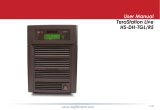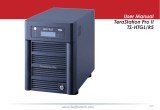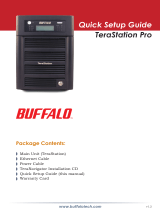
3
Chapter 7 Multimedia ................................................. 60
DLNA .............................................................................................. 60
Configuration ...........................................................................................60
Playing Files .............................................................................................61
Connected DLNA-compatible Devices ...................................................61
Streaming to DLNA-compatible Devices ...............................................62
Disabling Playback from Specific Devices .............................................62
iTunes Server ................................................................................. 63
BitTorrent ....................................................................................... 64
Chapter 8 Advanced Features .................................... 67
Email Notification ......................................................................... 67
Sleep Mode .................................................................................... 68
UPS (Uninterruptible Power Supply) ........................................... 70
Connecting a Printer ..................................................................... 71
Offline Files .................................................................................... 72
Accessing from an NFS Client ....................................................... 73
Encrypting Data Transmission ..................................................... 75
Encrypting Settings Data ........................................................................75
Encrypting FTP Transfer Data .................................................................75
SSL Keys ....................................................................................................75
Web Server ..................................................................................... 76
MySQL Server ................................................................................ 77
Saving and Applying Settings ...................................................... 78
Saving Settings ........................................................................................78
Applying Settings ....................................................................................79
Restoring Factory Defaults ........................................................... 80
























